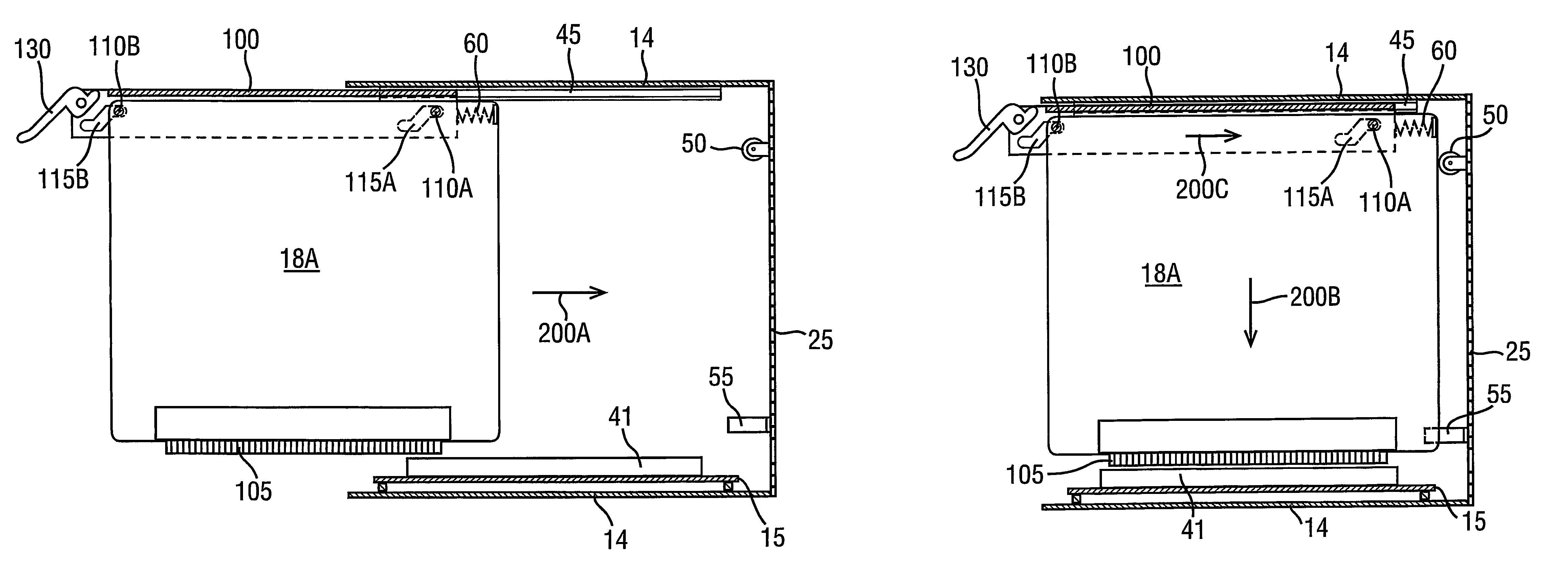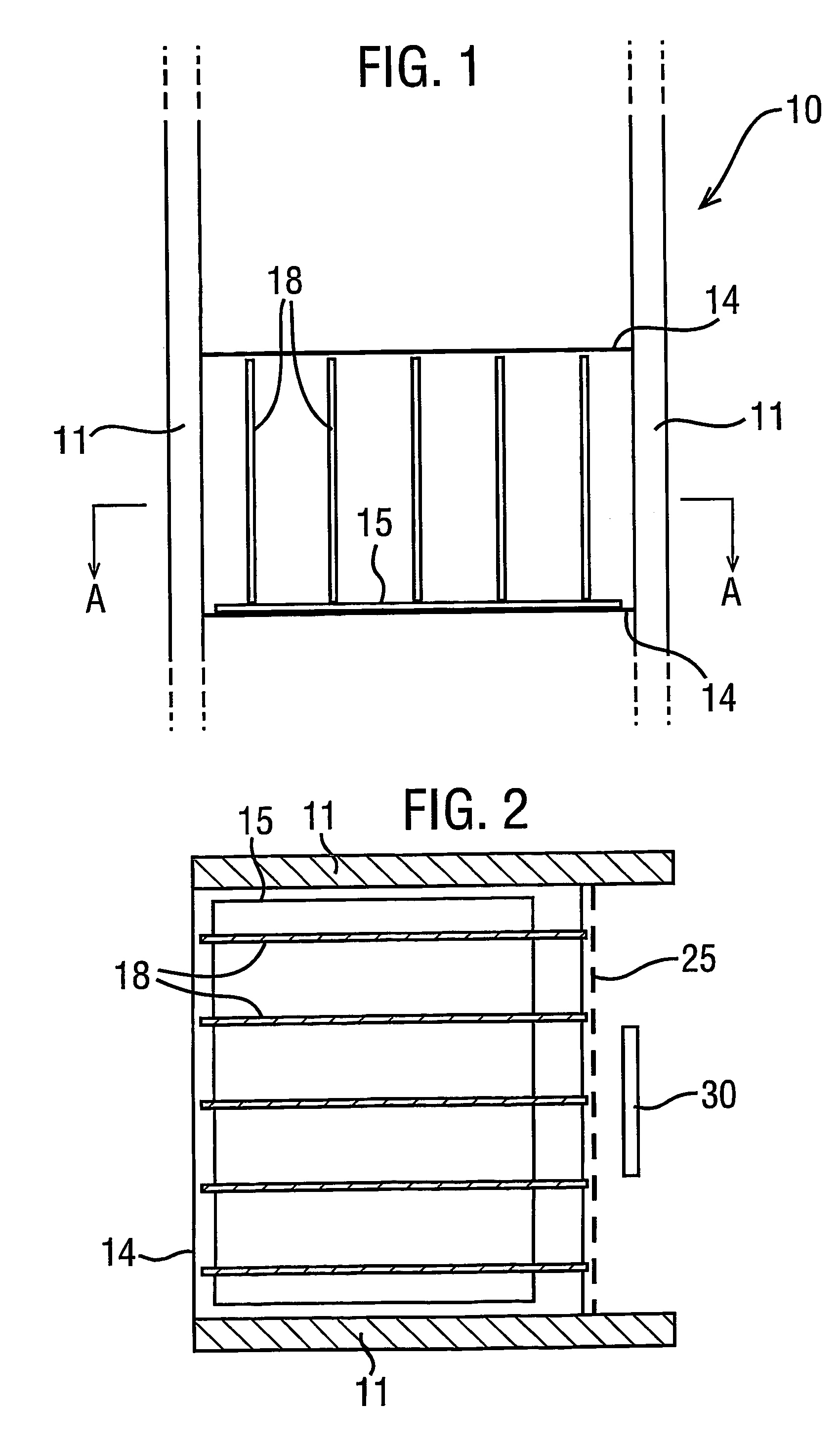Rack-mountable systems
a rack and rack technology, applied in the direction of electrical apparatus construction details, electrical apparatus casings/cabinets/drawers, coupling device connections, etc., can solve the problems of increasing noise, reducing cooling efficiency, and blocking the simple route of cooling air from the front to the rear of the rack
- Summary
- Abstract
- Description
- Claims
- Application Information
AI Technical Summary
Benefits of technology
Problems solved by technology
Method used
Image
Examples
Embodiment Construction
[0025]FIG. 1 illustrates in schematic form the front view of a rack-mounted computer system 10 representing one embodiment of the present invention, in which multiple shelves (or racks) 14 are supported in-between side walls 11. Within each shelf are multiple cards or printed circuit boards (PCBs) 18 that provide computing functionality in accordance with the particular components on the PCB (not shown). These are typically located in predetermined positions on a shelf known as slots. Note that the PCBs within one shelf do not necessarily all provide the same function; similarly the different shelves within system 10 may (and indeed commonly do) vary in purpose and configuration.
[0026]At the base of PCBs 18 is another card 15, which generally provides a bus or other communications facility to interconnect the PCBs 18 on a shelf. Card 15 may include its own processing capability, and may in some implementations also effectively provide the physical structure for shelf 14. In the conf...
PUM
 Login to View More
Login to View More Abstract
Description
Claims
Application Information
 Login to View More
Login to View More - R&D
- Intellectual Property
- Life Sciences
- Materials
- Tech Scout
- Unparalleled Data Quality
- Higher Quality Content
- 60% Fewer Hallucinations
Browse by: Latest US Patents, China's latest patents, Technical Efficacy Thesaurus, Application Domain, Technology Topic, Popular Technical Reports.
© 2025 PatSnap. All rights reserved.Legal|Privacy policy|Modern Slavery Act Transparency Statement|Sitemap|About US| Contact US: help@patsnap.com



